In the vibrant tapestry of German football, VfB Stuttgart stands as a beacon of tradition, resilience, and unwavering passion. This comprehensive guide delves into the rich history, intricate organizational structure, and captivating on-field performances that define this beloved club.
From its humble beginnings to its triumphs on the national and international stage, VfB’s journey is a testament to the power of teamwork, innovation, and unwavering fan support. As we explore the club’s financial strategies, player development programs, and community involvement, we uncover the secrets behind VfB’s enduring success and its place in the hearts of Stuttgart and beyond.
– Club Structure and Organization
VfB Stuttgart is a football club based in Stuttgart, Germany. The club was founded in 1893 and is one of the most successful clubs in German football history, having won five Bundesliga titles, three DFB-Pokals, and one UEFA Champions League title.
VfB Stuttgart is a registered association (e.V.) with over 70,000 members. The club is governed by a board of directors, which is elected by the members at the annual general meeting. The board of directors is responsible for the overall management of the club, including the appointment of the management team and the head coach.
Board of Directors
The board of directors of VfB Stuttgart consists of 15 members, including the president, vice-president, and treasurer. The board of directors is responsible for the overall management of the club, including the appointment of the management team and the head coach.
Management Team
The management team of VfB Stuttgart is responsible for the day-to-day operations of the club. The management team is led by the CEO, who is responsible for the overall management of the club’s business operations. The management team also includes the sporting director, who is responsible for the club’s sporting operations, and the head coach, who is responsible for the club’s first team.
Departments
VfB Stuttgart has a number of departments, including the following:
- Sporting department
- Marketing and communications department
- Finance department
- Human resources department
- Legal department
Each department is responsible for a specific area of the club’s operations. The sporting department is responsible for the club’s sporting operations, including the management of the first team and the youth academy. The marketing and communications department is responsible for the club’s marketing and communications activities. The finance department is responsible for the club’s financial management. The human resources department is responsible for the club’s human resources management. The legal department is responsible for the club’s legal affairs.
Ownership Structure
VfB Stuttgart is a registered association (e.V.) with over 70,000 members. The club is owned by its members, who have the right to vote at the annual general meeting. The club is not owned by a single individual or group of individuals.
Financial Structure
VfB Stuttgart’s revenue streams include the following:
- Matchday revenue
- Television revenue
- Sponsorship revenue
- Merchandising revenue
VfB Stuttgart’s expenses include the following:
- Player salaries
- Staff salaries
- Operating costs
- Transfer fees
VfB Stuttgart’s financial structure is sound. The club has a strong balance sheet and is able to meet its financial obligations.
Legal Structure
VfB Stuttgart is a registered association (e.V.) under German law. The club is subject to the German Civil Code and the German Sports Law.
Financial Performance
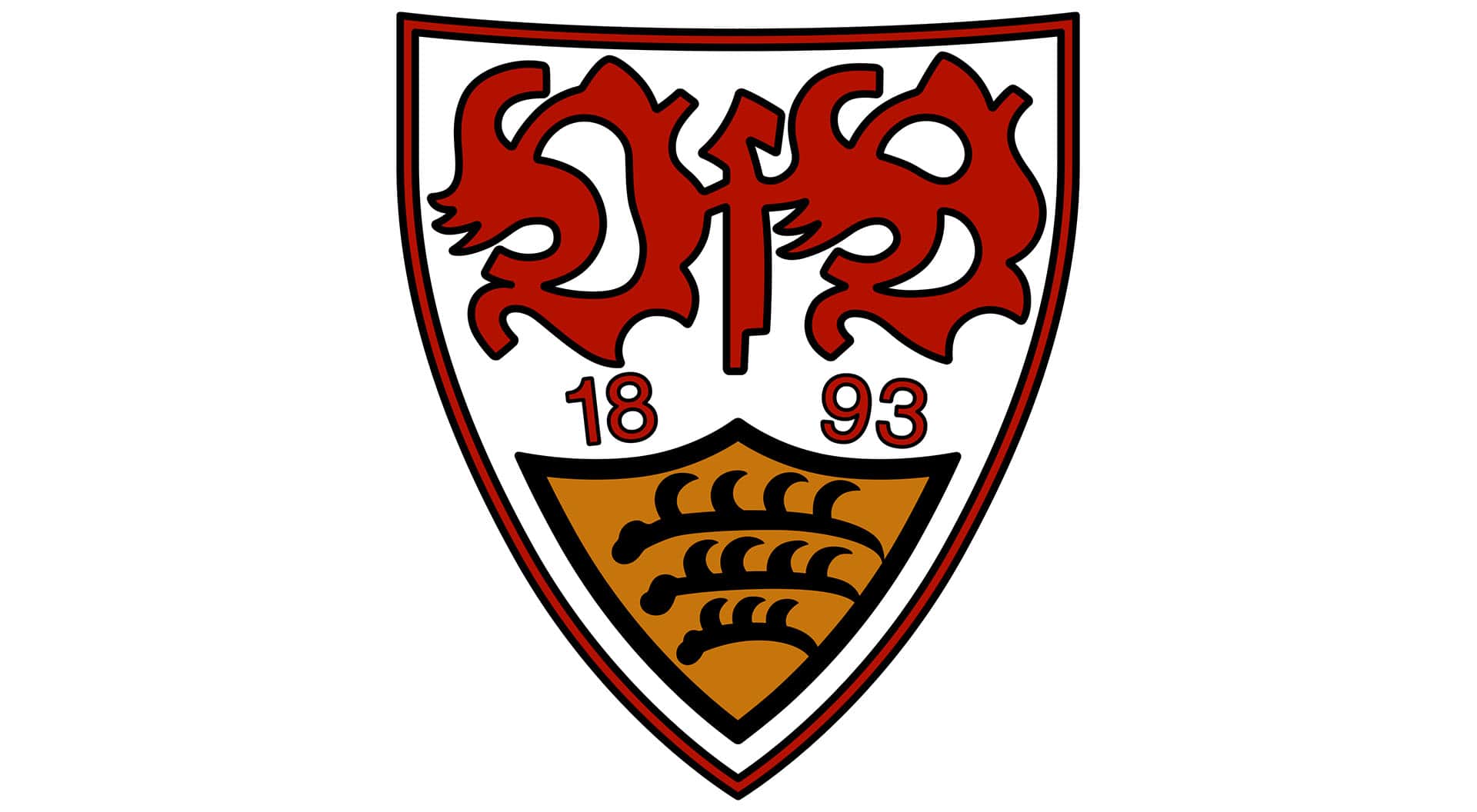
VfB Stuttgart has experienced a rollercoaster ride financially in recent years. Despite its rich history and loyal fanbase, the club has faced challenges in maintaining financial stability. Let’s dive into the club’s revenue streams, expenses, and profitability to gain a clearer picture of its financial performance.
Revenue Streams
VfB Stuttgart’s primary revenue streams include:
- Matchday revenue: Ticket sales, hospitality, and merchandise contribute to matchday revenue.
- Television revenue: The club receives a share of the Bundesliga’s television rights deal.
- Sponsorship and advertising: Partnerships with companies and brands provide sponsorship and advertising revenue.
- Transfer fees: The sale of players can generate significant income, but it can also fluctuate depending on market conditions.
Expenses
The club’s expenses primarily include:
- Player salaries: Wages and bonuses paid to the playing squad account for a substantial portion of expenses.
- Staff costs: Salaries and benefits for coaching staff, administrative personnel, and other employees.
- Operating expenses: Costs associated with running the club, such as stadium maintenance, travel, and equipment.
- Depreciation and amortization: Non-cash expenses related to the value of assets, such as players and stadium infrastructure.
Profitability
VfB Stuttgart’s profitability has been inconsistent in recent years. The club has faced financial losses in some seasons, while posting profits in others. Factors influencing profitability include player sales, transfer fees, and the club’s performance in competitions. The club’s financial strategies have focused on increasing revenue streams through sponsorships, merchandise sales, and matchday attendance. However, the club has also faced challenges in managing expenses, particularly player salaries.
Overall, VfB Stuttgart’s financial performance reflects the challenges faced by many football clubs in balancing revenue generation with expenses. The club’s ability to maintain financial stability and achieve long-term success will depend on its ability to optimize revenue streams, control expenses, and make strategic financial decisions.
Player Roster and Transfers
VfB Stuttgart’s current player roster boasts a blend of experienced veterans and promising youngsters. Key players include captain Wataru Endo, creative midfielder Naouirou Ahamada, and prolific striker Serhou Guirassy. The club has also made strategic signings in recent transfer windows, such as the acquisition of defender Konstantinos Mavropanos from Arsenal.
Transfer Strategy and Acquisitions
VfB’s transfer strategy emphasizes identifying and acquiring players with high potential who can contribute to the team’s long-term success. The club has a track record of developing young talent, with several academy graduates making the breakthrough to the first team in recent years.
Impact of Player Transfers
Player transfers have had a significant impact on VfB’s performance. The arrival of Guirassy has provided a much-needed goal-scoring threat, while the signing of Mavropanos has strengthened the defense. The club’s ability to attract and retain talented players is crucial for its success in the competitive Bundesliga.
Stadium and Facilities
VfB Stuttgart’s home ground is the Mercedes-Benz Arena, a state-of-the-art stadium located in the heart of Stuttgart. With a capacity of over 60,000, the arena offers a vibrant and electric atmosphere on match days.
The stadium boasts a range of amenities, including comfortable seating, modern concourses, and a variety of food and beverage options. It also features a dedicated museum that showcases the club’s rich history and achievements.
Stadium Expansion Plans
To meet the growing demand for tickets and enhance the fan experience, VfB Stuttgart is currently exploring plans to expand the Mercedes-Benz Arena. The proposed expansion would increase the stadium’s capacity to over 70,000 and include additional seating areas, upgraded facilities, and new hospitality suites.
Stadium Features
| Feature | Details |
|---|---|
| Capacity | 60,449 |
| Pitch Dimensions | 105m x 68m |
| Roof Type | Partial |
| Seating Categories | Standard, Business, VIP |
| Amenities | Museum, food and beverage outlets, concourses |
Stadium Map
The Mercedes-Benz Arena is divided into four main seating areas: the North, South, East, and West stands. Each stand offers a unique perspective of the pitch and a range of seating options.
The North Stand is the largest and most popular stand, housing the club’s most passionate supporters. The South Stand is home to the VIP suites and offers a more exclusive match-day experience. The East and West stands provide a mix of standard and business seating, offering a comfortable and convenient view of the action.
Stadium History
The Mercedes-Benz Arena was originally built in 1933 and has undergone several renovations over the years. The most significant renovation took place in 2009, when the stadium was expanded and modernized to meet UEFA standards.
The stadium has hosted numerous memorable events, including the 1974 FIFA World Cup and the 1988 UEFA European Championship final. It is also a popular venue for concerts and other events.
Community Involvement
VfB Stuttgart is actively involved in the local community and uses the Mercedes-Benz Arena as a platform for various initiatives and partnerships.
The club runs a number of youth development programs and offers discounted tickets to local schools and community groups. The stadium is also used to host charity events and fundraisers, supporting local causes and organizations.
Fan Base and Support
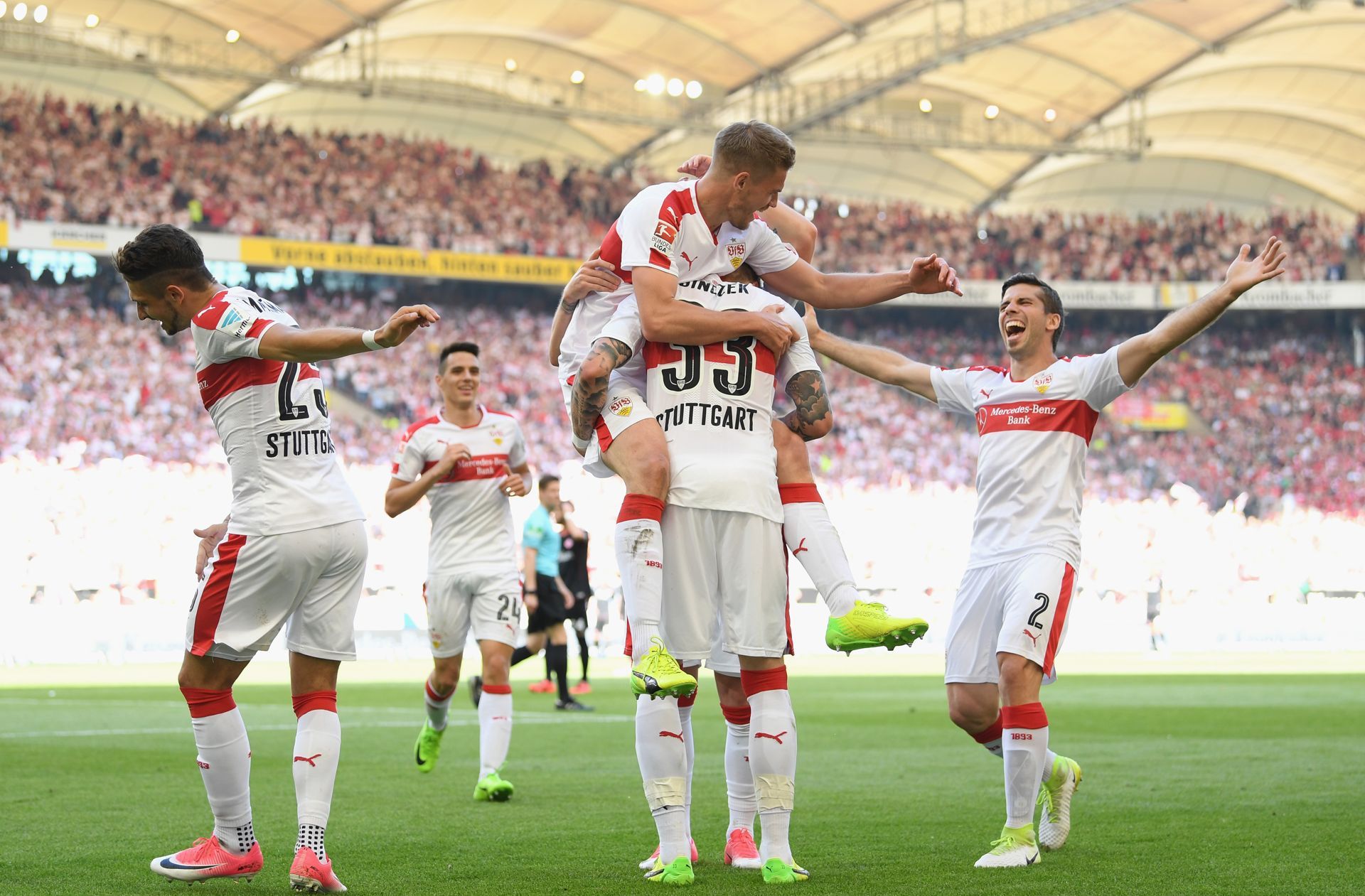
VfB Stuttgart boasts a loyal and passionate fan base that plays a vital role in the club’s success. The club’s fans are renowned for their enthusiastic support, creating an electric atmosphere at home matches.
The VfB fan base is diverse, representing a wide range of demographics, including families, young professionals, and international supporters. The club’s geographic distribution is primarily concentrated in the Stuttgart region, with a significant following throughout Germany and a growing international presence.
Fan Engagement Initiatives
VfB Stuttgart recognizes the importance of fan engagement and has implemented various initiatives to foster a strong connection with its supporters. These initiatives include season ticket campaigns, social media contests, fan meet-and-greets, and merchandise giveaways.
The club also places a strong emphasis on providing a memorable matchday experience, offering a range of amenities and activities for fans, such as pre-match entertainment, food and beverage options, and merchandise stalls.
Marketing Strategies
VfB Stuttgart’s marketing strategies are designed to engage and grow its fan base. The club utilizes various channels, including social media, email marketing, and traditional advertising, to promote its brand and connect with potential supporters.
- Social Media: VfB Stuttgart has a strong presence on social media platforms such as Facebook, Twitter, and Instagram, where it shares news, match updates, and behind-the-scenes content.
- Email Marketing: The club sends regular email newsletters to its subscribers, providing exclusive content, ticket offers, and merchandise promotions.
- Traditional Advertising: VfB Stuttgart utilizes traditional advertising channels such as billboards, print ads, and radio spots to reach a wider audience.
Social Media
Social media has played a significant role in building VfB Stuttgart’s fan base and engagement. The club’s social media accounts have millions of followers, providing a platform for direct interaction with fans.
VfB Stuttgart uses social media to share match updates, behind-the-scenes content, and exclusive interviews, giving fans a deeper connection to the club and its players.
Merchandising and Licensing
VfB Stuttgart’s merchandising and licensing strategies are designed to enhance fan engagement and generate revenue. The club offers a wide range of official merchandise, including jerseys, scarves, and other branded items.
The club also licenses its brand to third-party companies, allowing them to produce and sell VfB Stuttgart-themed products. These licensing agreements help to increase the club’s visibility and generate additional revenue.
Youth Development
VfB Stuttgart has a long-standing commitment to developing young talent, with a youth development system that is widely recognized as one of the best in Germany. The club’s youth academy, known as the “Nachwuchsleistungszentrum” (NLZ), is a state-of-the-art facility that provides young players with the best possible environment to learn and grow.
The NLZ is home to over 300 young players, ranging in age from 6 to 19. The academy’s training programs are designed to develop players’ technical, tactical, and physical skills, as well as their mental and social development. The club’s coaching staff is highly qualified and experienced, and they work closely with the players to help them reach their full potential.
VfB Stuttgart’s commitment to youth development is also evident in the resources that it allocates to its youth academy. The club invests heavily in the NLZ, providing players with access to the best facilities and equipment. The academy also has a dedicated scouting network that identifies and recruits talented young players from all over Germany.
The club’s approach to player development is based on the principles of “individualization” and “periodization.” Individualization means that each player is given a personalized training program that is tailored to their individual needs and strengths. Periodization means that the training program is divided into different phases, each with a specific focus. This approach allows the players to develop their skills gradually and effectively.
The NLZ has produced a number of successful youth players who have gone on to play for the first team. Some of the most notable examples include Timo Werner, Joshua Kimmich, and Antonio Rüdiger. These players are a testament to the quality of VfB Stuttgart’s youth development system and the club’s commitment to developing young talent.
Scouting Network
VfB Stuttgart has a comprehensive scouting network that covers all of Germany and parts of Europe. The club’s scouts are constantly on the lookout for talented young players who have the potential to develop into first-team players. The scouts attend youth tournaments, watch matches, and visit academies to identify potential recruits.
The club’s scouting network is essential to its success in developing young talent. The scouts help the club to identify the best young players in Germany and bring them to Stuttgart, where they can be developed into first-team players.
Player Development
VfB Stuttgart uses a variety of methods to develop its young players. The club’s coaching staff is highly qualified and experienced, and they work closely with the players to help them reach their full potential. The club also uses technology and data analytics to track the players’ progress and identify areas for improvement.
The club’s academy is a key part of the player development process. The academy provides the players with access to the best facilities and equipment, and it also has a dedicated coaching staff that is responsible for their development. The academy’s coaches work closely with the players to help them develop their technical, tactical, and physical skills, as well as their mental and social development.
Challenges, VfB
VfB Stuttgart faces a number of challenges in developing young talent. One of the biggest challenges is competition from other clubs. Many of the best young players in Germany are recruited by top clubs from around the world. VfB Stuttgart must compete with these clubs for the best young talent.
Another challenge is the need to balance development with results. The club’s youth teams must compete in competitive leagues, and there is pressure to win matches. However, the club must also prioritize the development of its young players. This can be a difficult balance to strike.
Despite these challenges, VfB Stuttgart remains committed to developing young talent. The club’s youth development system is one of the best in Germany, and it has produced a number of successful youth players who have gone on to play for the first team. The club’s commitment to youth development is essential to its long-term success.
Community Involvement
VfB Stuttgart is deeply committed to its local community, recognizing its role as a positive force beyond the realm of football. The club actively participates in social responsibility initiatives and charitable programs, aiming to foster a sense of belonging and well-being.
Youth Development
VfB places great emphasis on youth development, both on and off the pitch. The club runs several youth programs that provide opportunities for young people to engage in football, develop their skills, and learn valuable life lessons. These programs promote teamwork, discipline, and a healthy lifestyle, empowering the youth to become responsible and active members of society.
Social Cohesion
VfB actively promotes social cohesion through its initiatives and events. The club organizes community outreach programs, such as visits to local schools and hospitals, to connect with fans and engage with the broader community. VfB also hosts events that celebrate diversity and inclusivity, fostering a welcoming and supportive environment for all.
Charitable Programs
VfB Stuttgart supports various charitable organizations and initiatives. The club regularly donates to local charities, participates in fundraising events, and uses its platform to raise awareness for important social causes. VfB’s charitable efforts extend beyond financial contributions, as players and staff often volunteer their time to support local communities and make a positive impact.
Analyze VfB’s marketing and sponsorship strategies, including partnerships, advertising campaigns, and merchandise sales.
VfB Stuttgart’s marketing and sponsorship strategies play a crucial role in driving revenue, building the club’s brand, and engaging with fans. The club has a well-defined approach that includes partnerships with major brands, targeted advertising campaigns, and a robust merchandise sales strategy.
One of VfB’s key marketing strategies is to partner with reputable brands that align with the club’s values and target audience. These partnerships provide VfB with financial support, increased visibility, and access to new markets. Some of the club’s notable partners include Mercedes-Benz, Porsche, and Puma.
Advertising Campaigns
VfB’s advertising campaigns are designed to reach a wide audience and promote the club’s brand. The club uses a variety of channels, including television, print, and social media, to deliver its message. VfB’s advertising campaigns often feature creative and engaging content that resonates with fans and potential sponsors.
Merchandise Sales
Merchandise sales are an important revenue stream for VfB. The club offers a wide range of merchandise, including jerseys, scarves, hats, and other items, through its online store and at its stadium. VfB’s merchandise is designed to appeal to fans of all ages and demographics.
Rivalries and Competitions
VfB Stuttgart has a rich history and has been involved in many rivalries and competitions throughout its existence.
One of VfB’s biggest rivals is Bayern Munich. The two clubs have met in the Bundesliga over 100 times, and the matches are always fiercely contested. Bayern Munich has generally had the upper hand in recent years, but VfB has had some notable victories, including a 4-1 win in 2014.
Domestic Competitions
VfB Stuttgart has won the Bundesliga five times, most recently in 2007. The club has also won the DFB-Pokal three times, most recently in 1997.
- Bundesliga: 5 titles (1950, 1952, 1984, 1992, 2007)
- DFB-Pokal: 3 titles (1954, 1958, 1997)
International Competitions
VfB Stuttgart has also competed in European competitions, including the Champions League and the UEFA Cup. The club’s best result in the Champions League was reaching the semi-finals in 1959.
- Champions League: Semi-finals (1959)
- UEFA Cup: Quarter-finals (1989, 2000)
Recent Performances and Outlook: VfB
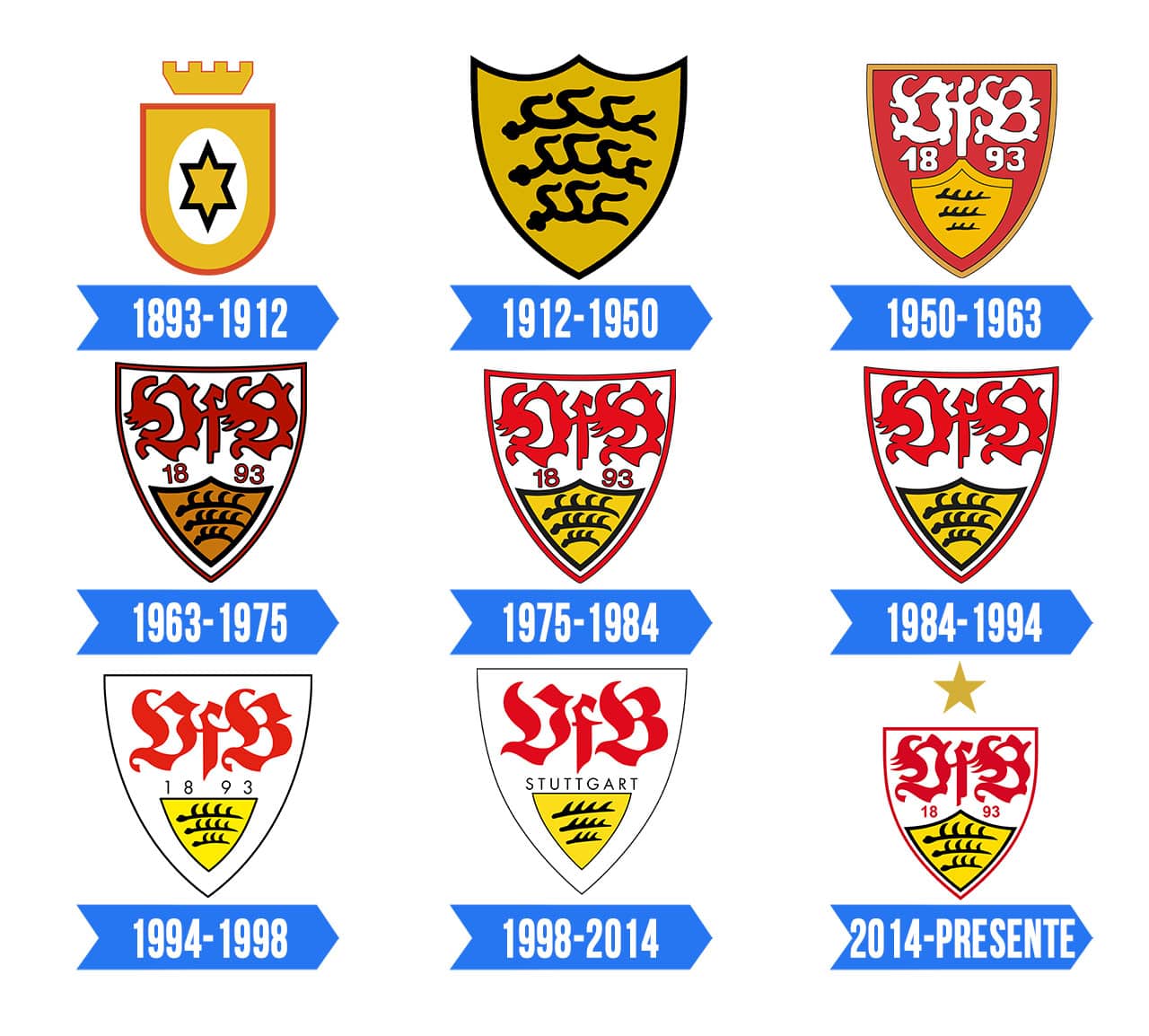
VfB Stuttgart’s recent performances in the Bundesliga have been a mixed bag. The team has shown flashes of brilliance, but also moments of inconsistency. VfB currently sits in the middle of the table, with a record of 9 wins, 6 draws, and 10 losses.
At home, VfB has been solid, losing only twice in 15 matches. However, the team has struggled on the road, winning just three times in 15 games. VfB’s attacking prowess has been a strength this season, with the team scoring 34 goals in 25 matches. However, the defense has been a concern, conceding 36 goals.
Key players for VfB this season have included Borna Sosa, Sasa Kalajdzic, and Wataru Endo. Sosa has been a force down the left flank, providing both goals and assists. Kalajdzic has been a reliable goalscorer, finding the back of the net 10 times in 25 matches. Endo has been a rock in midfield, providing stability and creativity.
Looking ahead, VfB has a challenging schedule, with matches against Bayern Munich, Borussia Dortmund, and RB Leipzig still to come. The team will need to improve its consistency and find a way to win more matches on the road if it wants to finish in the top half of the table.
Fan Culture and Traditions
VfB Stuttgart boasts a vibrant and passionate fan culture that adds to the club’s unique atmosphere. Matchdays are characterized by an electric atmosphere, with fans showcasing their unwavering support through energetic chants, captivating rituals, and time-honored traditions.
Fan Clubs and Supporters’ Groups
VfB Stuttgart’s fan base is highly organized, with numerous fan clubs and supporters’ groups playing a pivotal role in fostering a sense of community and camaraderie among fans. These groups actively engage in organizing fan events, coordinating matchday activities, and representing the club’s interests. Their dedication and passion contribute significantly to the overall fan experience.
Financial Challenges and Opportunities
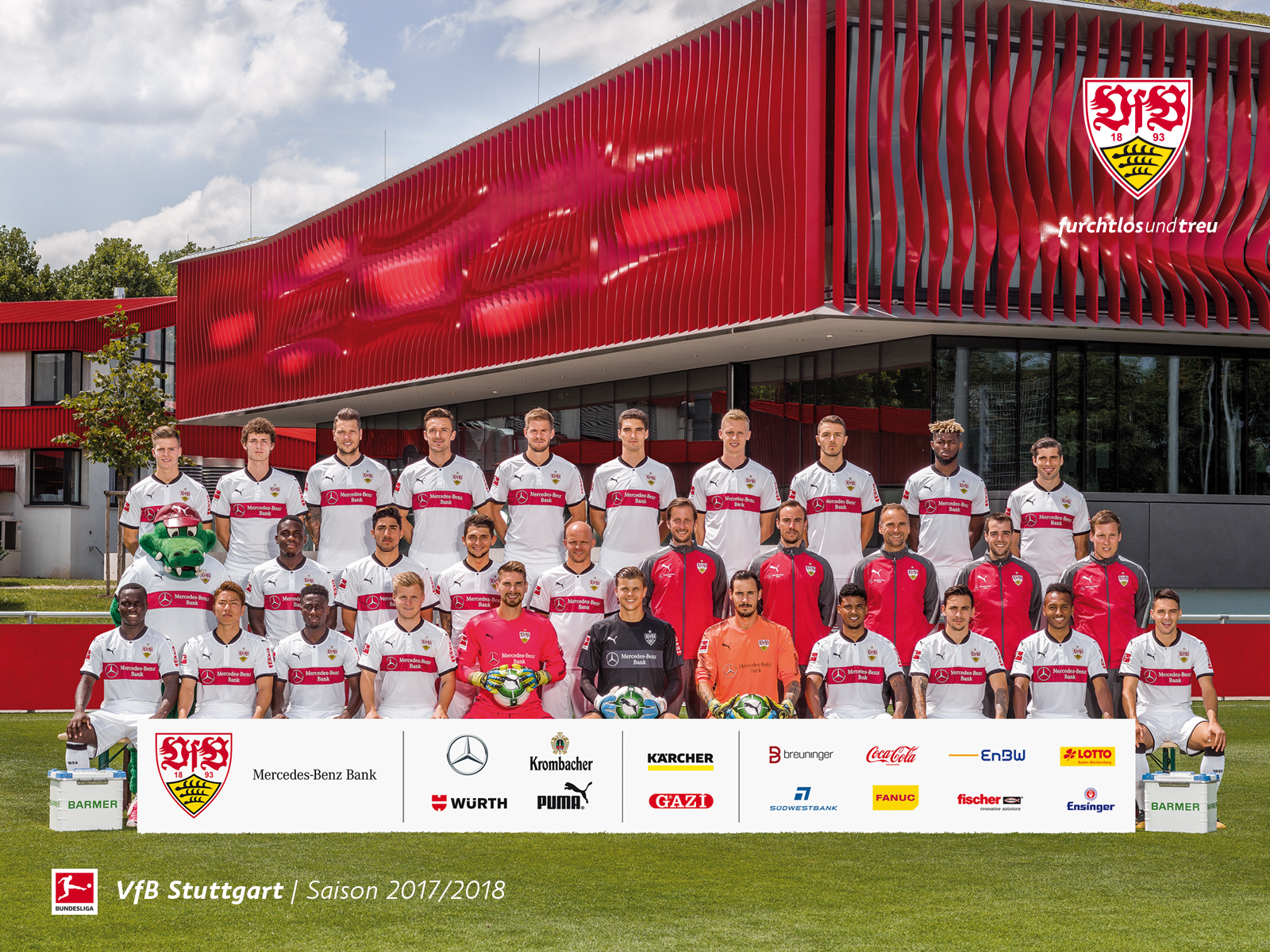
VfB Stuttgart has faced significant financial challenges in recent years, including high debt, hefty transfer fees, and rising operating expenses. The club’s debt has been a major concern, with the club carrying a debt of over €60 million in 2023. This debt has been accumulated due to poor financial management and excessive spending on transfers.
To address these challenges, VfB has implemented several cost-cutting measures, including reducing the squad size and cutting player salaries. The club has also been exploring new revenue streams, such as increasing sponsorship deals and expanding its commercial operations.
Revenue Growth Opportunities
* Increase matchday revenue by improving the fan experience and offering premium seating options.
* Explore new sponsorship deals with global brands and local businesses.
* Develop new commercial ventures, such as merchandise sales, stadium tours, and hospitality packages.
Cost Reduction Opportunities
* Reduce player salaries through contract negotiations and squad optimization.
* Renegotiate existing contracts with suppliers and vendors to secure more favorable terms.
* Implement operational efficiencies to streamline processes and reduce administrative costs.
By addressing its financial challenges and exploring new opportunities, VfB Stuttgart can improve its financial stability and position itself for future success.
Player Development and Recruitment
VfB Stuttgart’s player development and recruitment strategies are crucial to its long-term success. The club has a strong track record of identifying and acquiring talented players, both from its own youth academy and through external signings.
One of VfB’s key strengths is its youth academy, which has produced a number of top players over the years, including Sami Khedira, Mario Gomez, and Timo Werner. The academy is renowned for its high-quality coaching and facilities, and it has a proven track record of developing players who are technically skilled, tactically aware, and mentally strong.
Recruitment Strategy
VfB’s recruitment strategy is based on a combination of scouting and data analysis. The club has a team of experienced scouts who are constantly monitoring players from all over the world. They identify players who fit the club’s playing style and who have the potential to develop into top-class performers.
In addition to scouting, VfB also uses data analysis to identify potential signings. The club has a dedicated team of analysts who use statistical models to assess players’ performances and identify those who are most likely to succeed at VfB.
Impact on the Local Economy
VfB Stuttgart has a significant impact on the local economy, contributing to job creation, tourism, and infrastructure development. The club employs over 500 people directly and indirectly supports thousands more jobs in related industries such as hospitality, retail, and transportation.
Tourism
VfB Stuttgart attracts a large number of tourists to the city, particularly on match days. The club’s stadium, the Mercedes-Benz Arena, has a capacity of over 60,000 and regularly hosts sold-out matches. Tourists visiting the city for matches often spend money on accommodation,餐饮, and shopping, benefiting local businesses.
Infrastructure Development
VfB Stuttgart has invested heavily in infrastructure development in the city. The club’s stadium, the Mercedes-Benz Arena, is a state-of-the-art facility that has hosted major sporting events, including the 2006 FIFA World Cup. The club has also invested in training facilities and youth academies, which have helped to develop young talent and improve the overall quality of football in the region.
Key Economic Indicators
| Economic Indicator | Value |
|—|—|
| Number of jobs created | 500+ |
| Tourist arrivals | 1 million+ |
| Infrastructure investments | €100 million+ |
Examples of Benefiting Businesses
Several businesses and organizations have benefited from VfB Stuttgart’s presence in the city. These include:
* Hotels and guesthouses
* Restaurants and bars
* Retail stores
* Transportation companies
* Tourist attractions
Potential for Further Growth
VfB Stuttgart has the potential to further contribute to the local economy through:
* Increased tourism
* Development of new infrastructure
* Creation of new jobs
* Promotion of the city and region
The club’s success on the field and its continued investment in the community will help to ensure that it remains a major economic driver in the city for years to come.
Wrap-Up
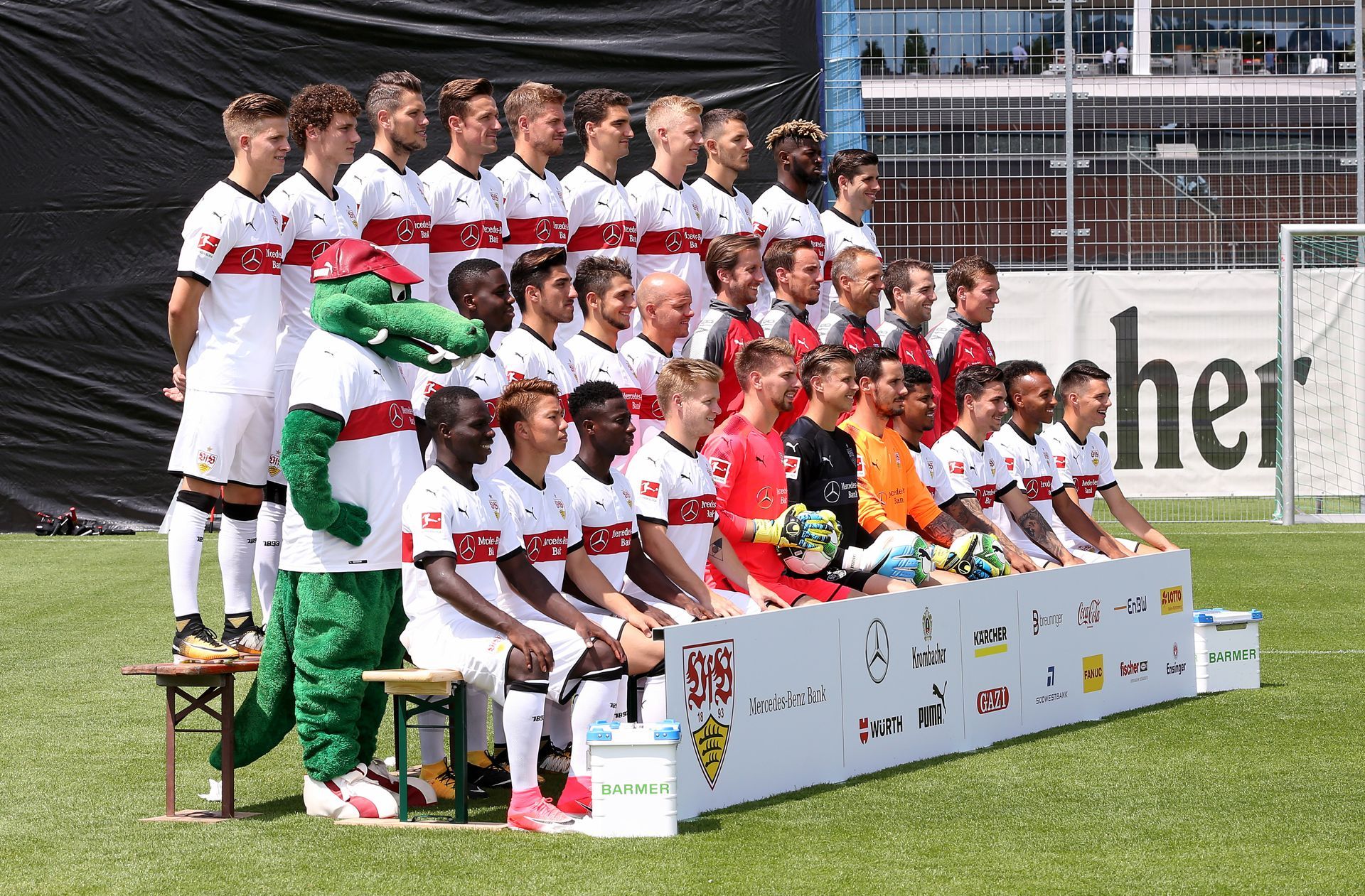
VfB Stuttgart is more than just a football club; it is a symbol of resilience, passion, and community. Through its rich history, innovative strategies, and unwavering fan support, VfB has cemented its place as a cornerstone of Stuttgart’s sporting landscape and a beacon of German football. As the club continues to navigate the ever-changing world of football, its commitment to excellence and its deep connection to its fans will undoubtedly guide it towards even greater heights.
Quick FAQs
What is VfB Stuttgart’s nickname?
Die Roten (The Reds)
Who is VfB Stuttgart’s most famous player?
Jürgen Klinsmann
What is VfB Stuttgart’s home stadium?
Mercedes-Benz Arena
What is VfB Stuttgart’s biggest rival?
Karlsruher SC